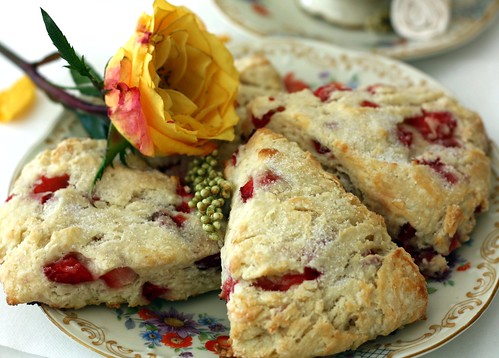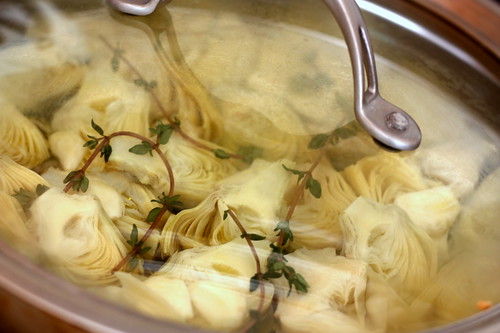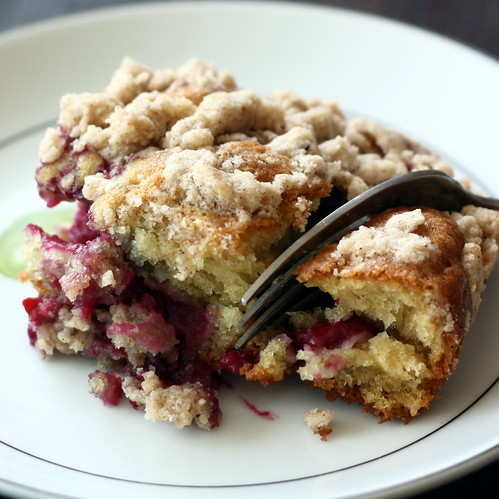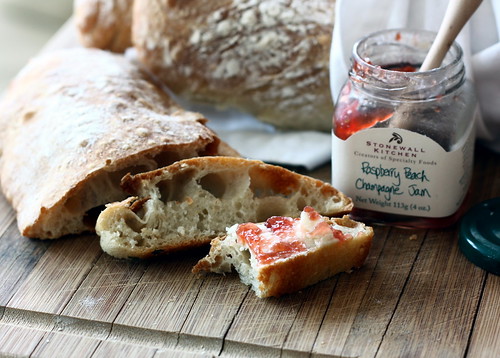 Let's be honest: we all need a perfect Madeleine recipe. You know me, the one with the tiny kitchen where a muffin tin has at least four different uses -- I'm the last person who will tell you that you need this specific kind of brand/ingredient/cake-pan. And yet, I am telling you now -- you need a Madeleine pan and you need this recipe for honey Madeleines. Why? Because it's perfect.
Let's be honest: we all need a perfect Madeleine recipe. You know me, the one with the tiny kitchen where a muffin tin has at least four different uses -- I'm the last person who will tell you that you need this specific kind of brand/ingredient/cake-pan. And yet, I am telling you now -- you need a Madeleine pan and you need this recipe for honey Madeleines. Why? Because it's perfect. 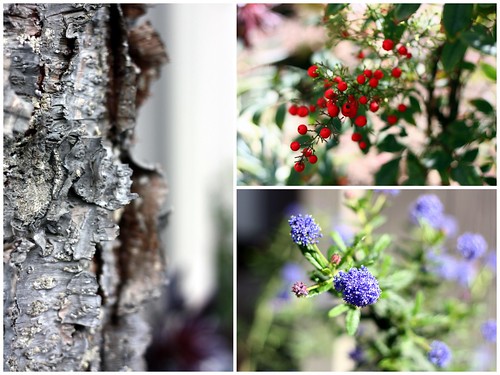 Spring brings that out in me, the appreciation of simplicity, of new beginnings. It's in the air, the way the little buds all open up at the same time and this tree outside my window, this tree that was bare yesterday, suddenly shimmers with a pale green mist. Sure, I could bake, say, a brandied-cherry mascarpone cheesecake (interested?) or mix some Poma-limon-tinis for brunch, but truth be told, all I want is a cup of tea, a stack of these tender little cakes and the smells of spring. What can I tell you, I'm just that kind of a girl.
Spring brings that out in me, the appreciation of simplicity, of new beginnings. It's in the air, the way the little buds all open up at the same time and this tree outside my window, this tree that was bare yesterday, suddenly shimmers with a pale green mist. Sure, I could bake, say, a brandied-cherry mascarpone cheesecake (interested?) or mix some Poma-limon-tinis for brunch, but truth be told, all I want is a cup of tea, a stack of these tender little cakes and the smells of spring. What can I tell you, I'm just that kind of a girl.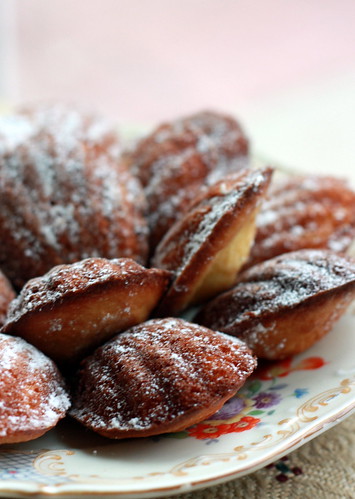 You might remember that way back when, I tried Dorie's Madeleines and I wasn't thrilled. Having made them again, I can definitely say that my technique was off at that time, so it's partly my fault, but out of the two recipes, this one comes out as a clear winner. It was soft, it was fluffy, it was a little crunchy on the outside with tender air pockets inside. Lightly sweet with an underlying taste and smell of honey, these little cakes are just begging to be glazed or simply dusted with a festive coat of confectioner's sugar. They will lift you out of your winter funk -- and that's not a promise I make lightly.
You might remember that way back when, I tried Dorie's Madeleines and I wasn't thrilled. Having made them again, I can definitely say that my technique was off at that time, so it's partly my fault, but out of the two recipes, this one comes out as a clear winner. It was soft, it was fluffy, it was a little crunchy on the outside with tender air pockets inside. Lightly sweet with an underlying taste and smell of honey, these little cakes are just begging to be glazed or simply dusted with a festive coat of confectioner's sugar. They will lift you out of your winter funk -- and that's not a promise I make lightly. Honey Madeleines
Once Upon A Tart
(makes 12 full sized Madeleines or 24 minis)
[Note: I love this book and this recipe, but their instructions for Madeleines are kind of scant and assume a greater level of familiarity with Madeleines than I previously had, so I roamed the internet for tips and have compiled an all-you-need-to-know Madeleine tutorial. I'd like to say I learned all this by example and by trial and error, but really, it was mostly by error. :)]
3/4 cup all purpose flour
4 tbsp butter (plus more for buttering pan)
2 eggs, room temperature
1/3 cup granulated sugar
1 tbsp brown sugar
1 tbsp honey (I prefer to use dark, fragrant honey)
1 tsp vanilla or almond extract
1 tsp baking powder
pinch of salt
In a small saucepan or microwave, melt the 4 tbsp of butter (some people like to brown it, but I haven't tried that yet). Stir in honey and extract. Let cool to room temperature.
While the butter/honey/extract is cooling, whisk the flour, baking powder and salt together in a small bowl. For full disclosure, I have to tell you that for the best, the tenderest cookies, what you really need to do is sift the dry ingredients together, and possibly sift them twice (but if you are short on time or patience, or you are me, whisking is just fine).
Break the two eggs into a large bowl and add the sugars. Now, this part is really important - whip the eggs on a high speed for at least 3 minutes -- possibly as much as 5 -- until they are thick and light in color, and fall in a dense ribbon when you lift your beater out of the bowl. This is what gives Madeleines their airy texture, so don't skimp on the whipping.
With a rubber spatula, gently fold the dry ingredients into the eggs, being really careful not to deflate the eggs and mixing only until the flour disappears. Then, being just as careful, fold in the cooled butter/honey/extract mixture. I do this by pouring it down the side of the bowl and then swirling it around with the spatula until the texture is uniform.
Press a piece of plastic wrap against the surface to prevent a skin from forming and refrigerate for 30 minutes.
Turn the oven to 400F and brush your Madeleine pan with softened or melted butter. Brush it well - the worst is to be stuck prying your beautiful little cakes from the pan because you didn't butter it enough. Fill the molds about 3/4 of the way - don't worry, they will spread and rise as they bake. Bake until the Madeleines rise and the edges are browned. In practice, it's usually about 10-12 minutes for full sized cakes or 8-10 for minis. Please watch carefully because even 30 seconds extra makes a difference with these.
Take out the pan and tap it lightly on the counter to unmold the cakes and then carefully pry them out of the molds (I use a dull butter knife to help me there), arrange on plate and dust with confectioner's sugar. Usually, Madeleines should be eaten the same day they are made, but these were still totally awesome the next day.
To hump or not to hump, that is the question?
In my search for baking tips, I came across what I like to call as "The Great Madeleine Debate." By this, I mean the hump vs. no hump question. Some Madeleine purists insist that the perfect Madeleines need to have a distinct hump when coming out of the oven, and as such, this is the only kind they will allow to cross their venerated lips. The other purists counter with, "Aha, but even PARISIANS -- the ultimate authority on pastries in general and Madeleines in particular -- don't like their Madeleines to hump, and humping is not ladylike anyway, so there." They then get into a Madeleine-throwing fight and many cookies are sacrificed in the ensuing battle.
To me, all this "much ado about nothing" (I'm feeling very Shakespearean today) seems kind of silly (sorry, Madeleine purists). I mean, these are little cakes, not camels, right, so why would we insist on a hump? In short, my view is: as long as they taste great, I give them a pass, hump or no hump.
Continued after the jump...

